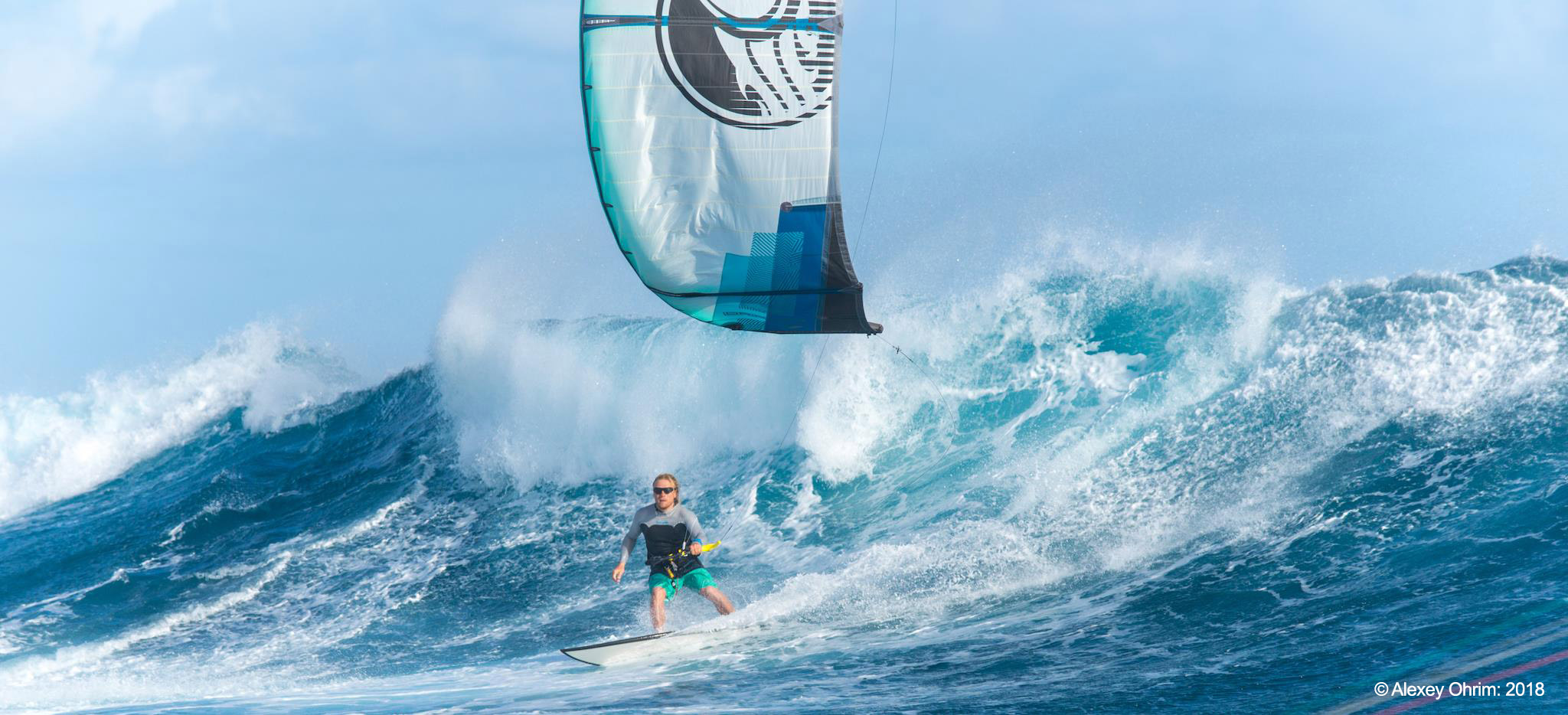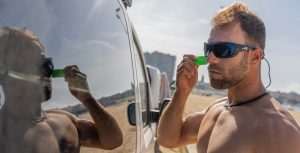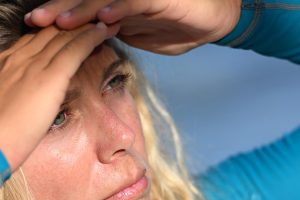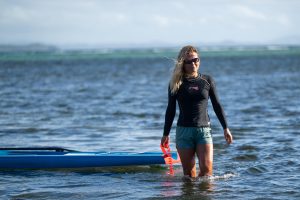Fogging is caused by a “phase change” of water vapour to liquid. This occurs mostly when warmer air meets a cooler surface. So if you use your LiP Watershades in a cold water environment, read on…this advice is for you!
There are two ways in which lens fog can develop.
-
Body-heat fogging: Warm, humid air from your body and breath gets trapped behind the lens, especially when you’re working hard (e.g. paddling out) and /or the wind drops. This moisture condenses on the inside of the lens, creating fog. In this case, the outer lens surface normally remains fog-free.
-
Condensation fogging: This occurs when the lens cools down to the dew point temperature – often from being dunked in cold water or exposed to cold blasts of air. Moisture in the surrounding air (not just your own breath) condenses on the lens – on both the inner and outer lens surfaces.
If you are considering purchasing a pair of LiP Sunglasses with an anti-fog coating on the inside lens surface (where stated in the product description), note that the anti-fog coating is capable only of resisting lens fog caused by body heat on the inner surface of the lens. It is not designed to overcome, nor will it succeed in preventing, condensation fogging. There isn’t currently a lens technology available that can overcome condensation fogging in a watersports environment.
For condensation fog to develop, the temperature of the lens surface must be taken to the ‘dew point temperature’ or lower. The dew point is the temperature at which air must be cooled to become fully saturated with water vapour. If the lens temperature is above the dew point, then fogging is unlikely to occur. Fogging is also extremely unlikely to occur when cold air meets a cold surface, or where warm air meets a warm surface or indeed when cold air meets a warm surface. The problem is worse on cool damp days when the dew point is lower or when the water is cold but the air temperature is warm and/or humid.
A classic scenario when fogging can develop is when a kitesurfer suffers a wipe-out and loses their board inside a wave set. As the waves crash over you while you work to retrieve your board, the temperature of your lenses will drop to meet the surrounding water temperature. As you exit the water and start riding again, the warmer air may suddenly condense and your lenses instantly fog up. This is further exacerbated by heavy breathing. The fogging that develops will remain in place until the temperature of the lenses equalises with the surrounding air temperature. This may take a minute or so.

What are the solutions for condensation fogging?
Given that the laws of nature determine if and to what extent condensation fogging occurs, the question is not how we can prevent fog from happening in the first place, but rather to present solutions for when it does occur.
We have addressed fogging by a combination of product design and just as importantly, recommending suitable user habits and routine product care.
Design considerations:
- Our patented double vortex vent system comprising cuttings in the lenses and venting channels in the frames encourages air flow behind the lenses to clear fogging from the inside. Get moving again, and the fog should clear relatively quickly.
- Hydrophobic lens coatings that repel moisture. Water on the lens surface is encouraged to “bead” and slide off the lenses.
- Lens material; nylon has a lower thermal conductivity than polycarbonate. Nylon lenses therefore have a delayed response to sudden temperature changes
User behaviour and Product Care tips:
- The fog should disappear once you are moving again and the double vortex vent system is allowed to do its job. If the fogging is 100% and you cannot see anything through the lenses, release the leash clasp a little and hang them around your neck to allow more airflow across the lenses until they are clear again.
- Avoid touching or wiping the lenses when they are wet or fogged up. Wiping the lenses when they are wet will only disrupt the hydrophobic surface and encourage water to accumulate where the lenses have been wiped.
- Avoid placing sunglasses on top of your head. Heat and sweat from your head (the hottest part of your body) will accumulate on the inside of the lenses.
- Take care of your Watershades after every session on the water, and be sure to let them dry before you buff them with the microfibre bag. Particles on the lens surface will attract water and dirt, so check for dust or marks on the lenses immediately before you head out on the water. See our product care guidance for more details – Taking Care of your Watershades




